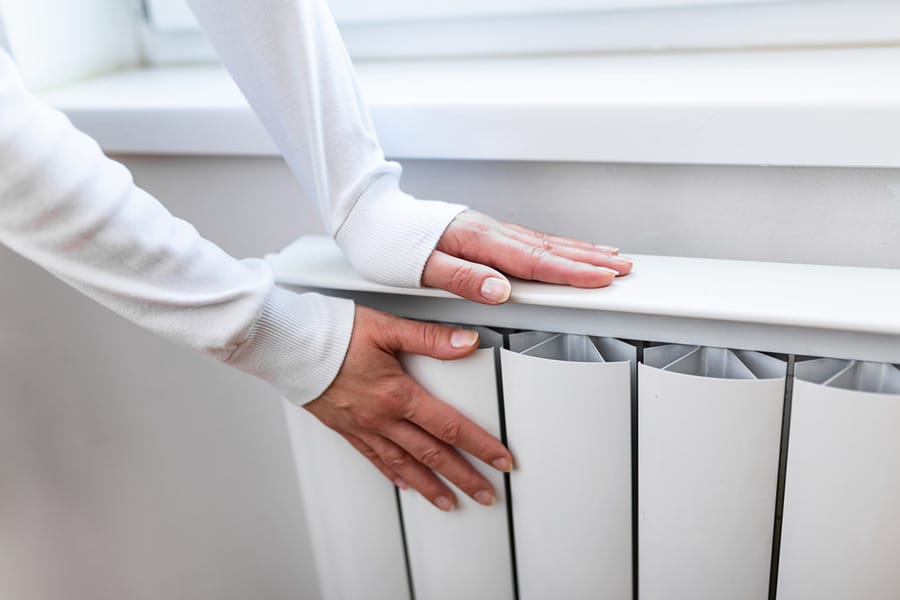Why are my radiators cold at the top?
One or more cold radiators is a really common issue, especially when turning the heating back on for the first time in autumn. The problem is caused by an air pocket at the top of the radiator. Thankfully, it is usually very easy to fix, by bleeding the radiator. All you’ll need is a radiator key, a small bucket and a rag. This YouTube video will show you how to do it.
Remember, if you have a sealed system, you will need to re pressurise the system with water from your filling loop. If you don’t, the system will lose pressure and shut the boiler off.
Why is my radiator hot at the top and cold at the bottom?
A radiator that is hot at the top but cool at the bottom is a different problem altogether. The most common cause is residue build-up known as magnetite (or sludge). Over time, heating system pipes degrade. Small flakes of rust become detached from the pipework and migrate over the system. They can then gather and settle as gunk at the bottom of radiators. In hard water areas, there can also be an accumulation of limescale. This is bad news for your heating system as less heat will be available to radiate into the room. Sludge could also damage your heating system if it causes a blockage.
If ALL of your radiators are cold at the bottom
This is a sign that your system would benefit from power flushing. Power flushing is a job for the professionals and involves pumping cleaning chemicals and high-pressure water through your entire heating system.
Why is just one of my Radiators Cold?
A stuck radiator valve or an air bubble in the system are often at the root of the problem when a single radiator doesn’t get hot.
If it’s an air bubble, it’s easy to sort out:
1. Turn on the central heating and turn every radiator up to max for approximately 15 minutes.
2. Turn everything off and let the system cool down for 1 hour
3. Bleed every radiator, starting with the one closest to the boiler.
If your radiator has a stuck valve, you can carefully have a go at releasing it. Thermostatic valves are simple to remove. Check that the pin can move up and down easily. If not, you can usually free it off with WD40 and jiggle it gently with some grippers. These valves can be prone to getting stuck if the radiator hasn’t been used for a while.
If you don’t feel confident to tackle radiator problems yourself, WaterGuys are just a phone call away. We are competent, Gas Safe registered heating engineers, ready to fix any kind of problem with your central heating or radiators.
We service, maintain and repair all makes and types of boiler including:
Contact us on 020 313 77749
